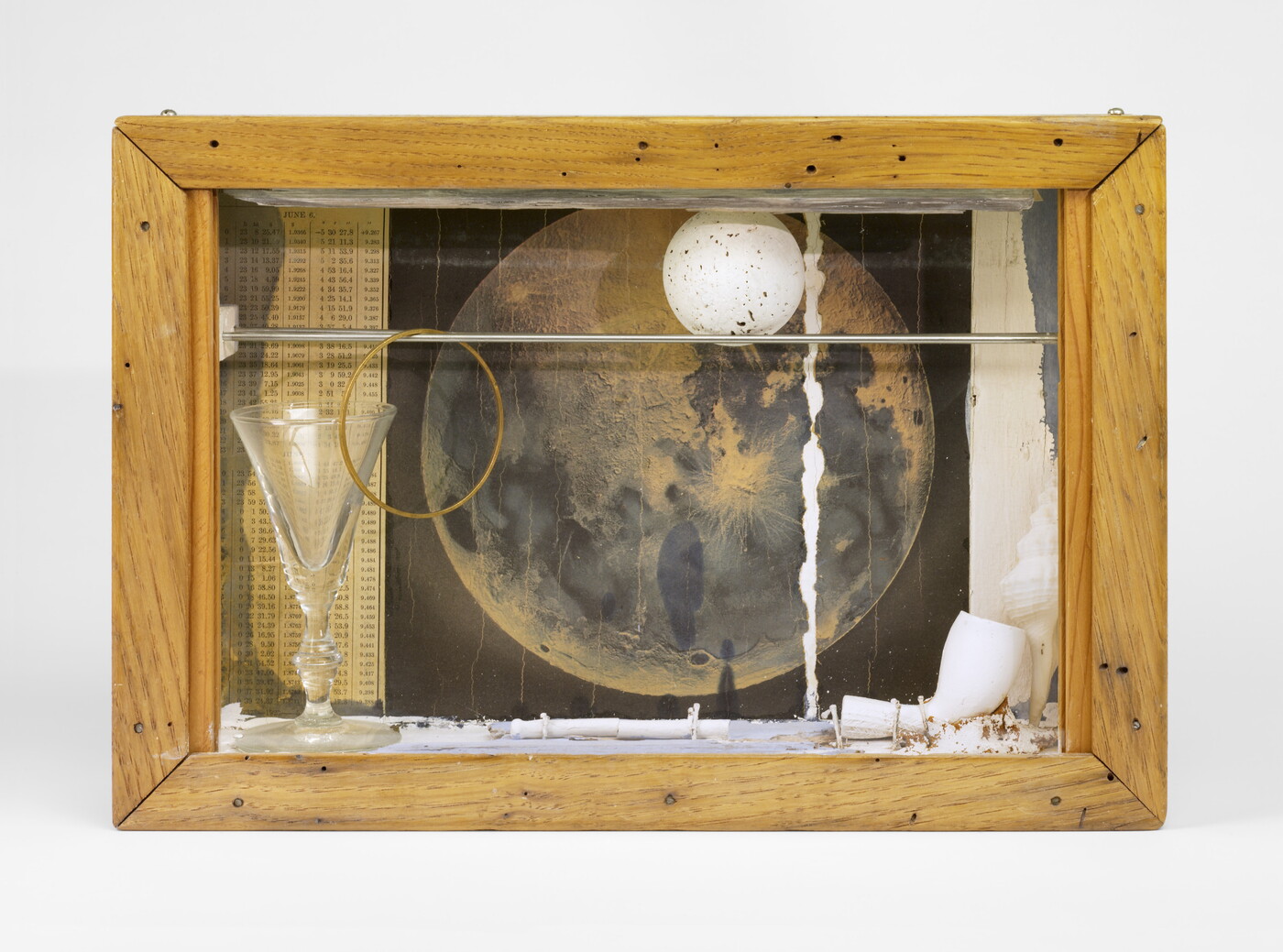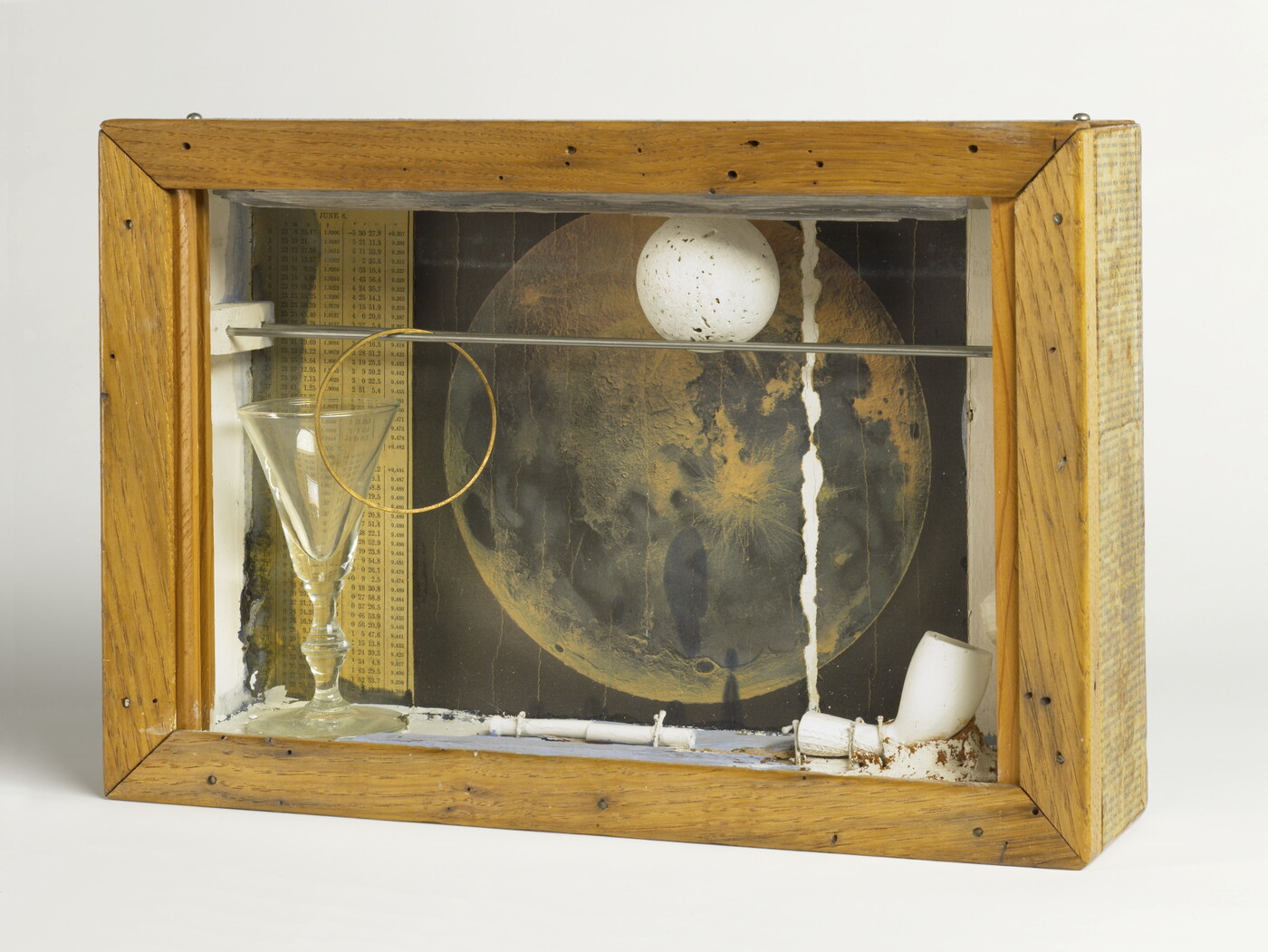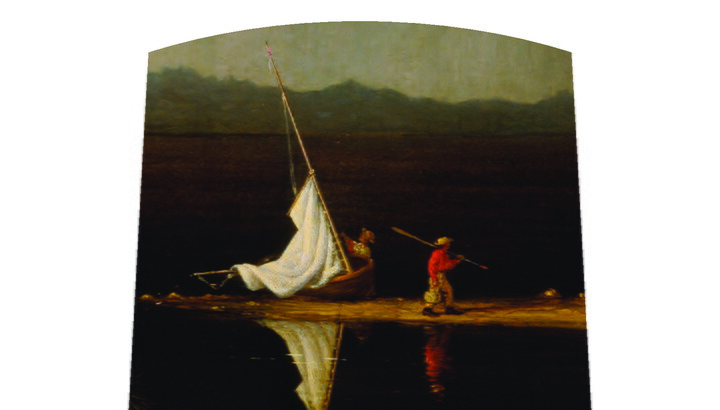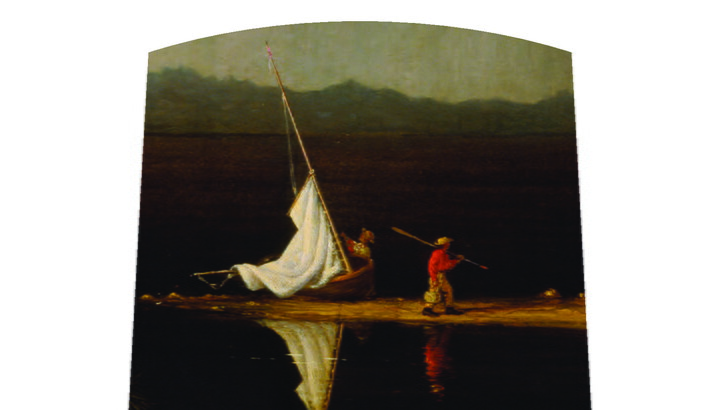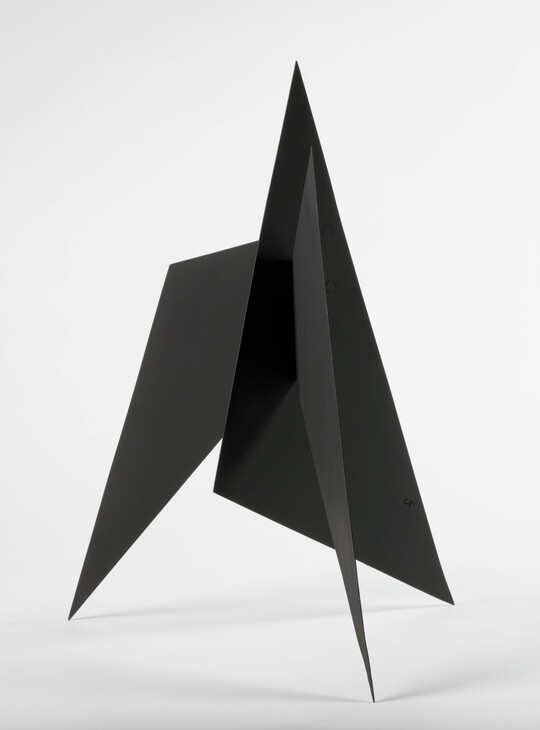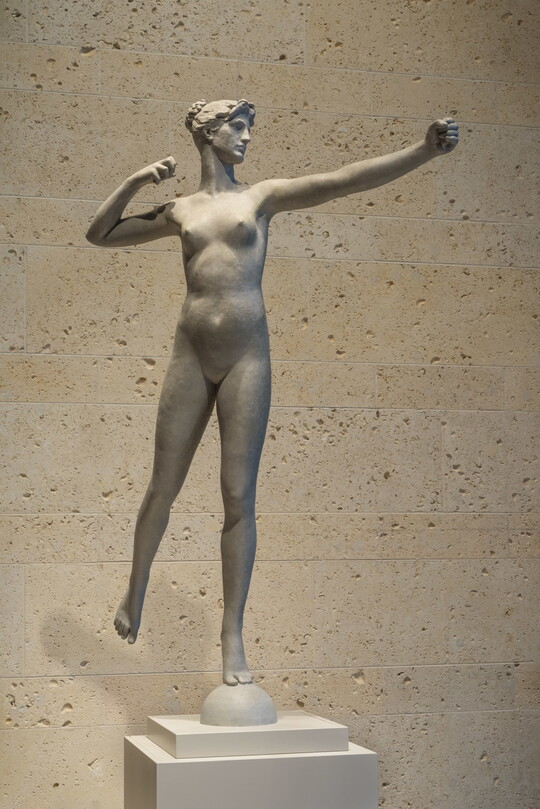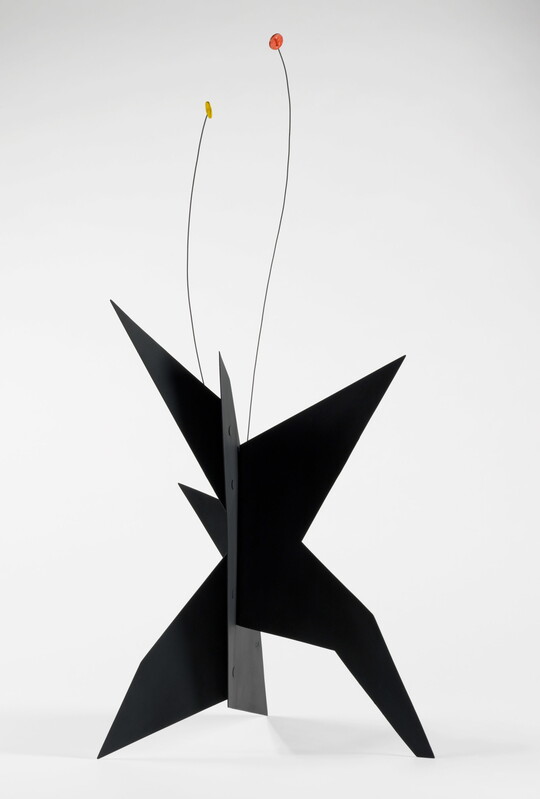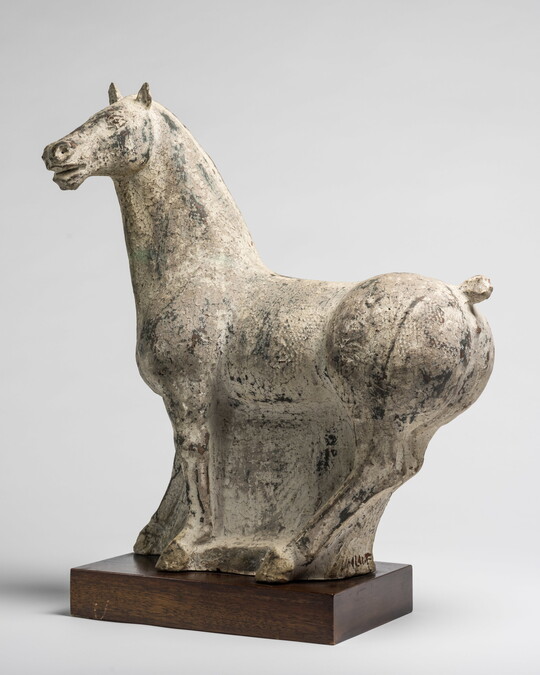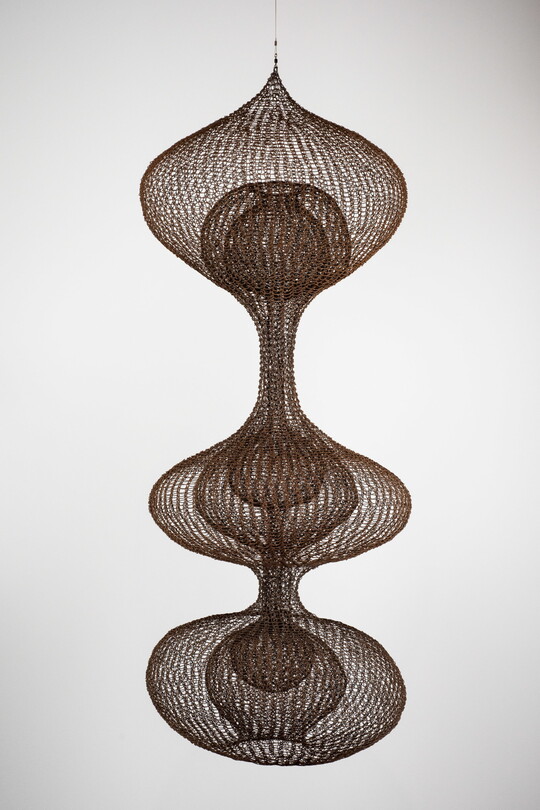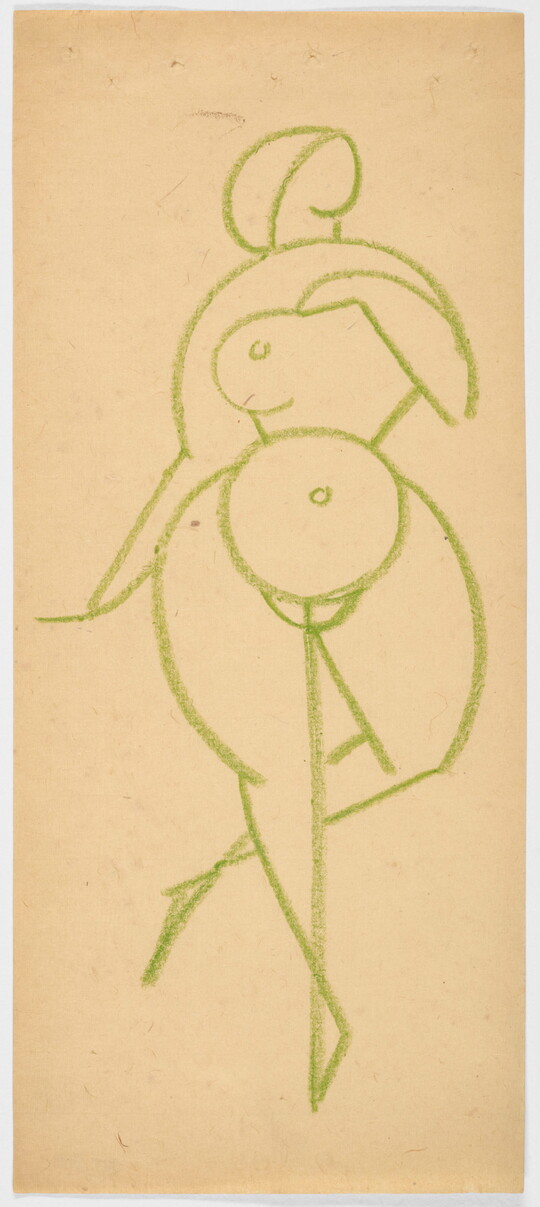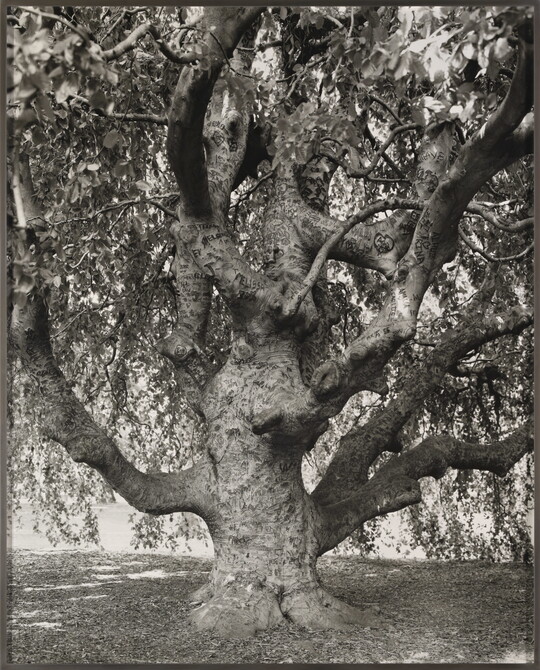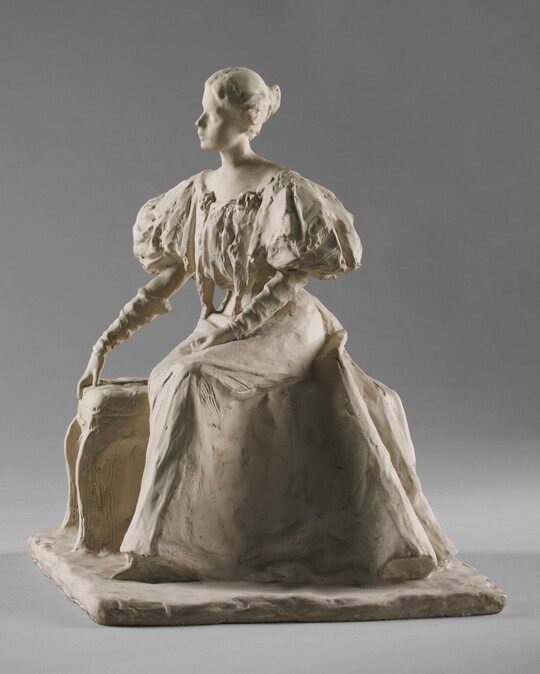

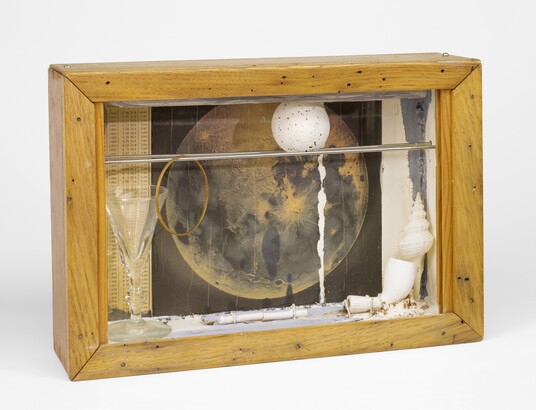
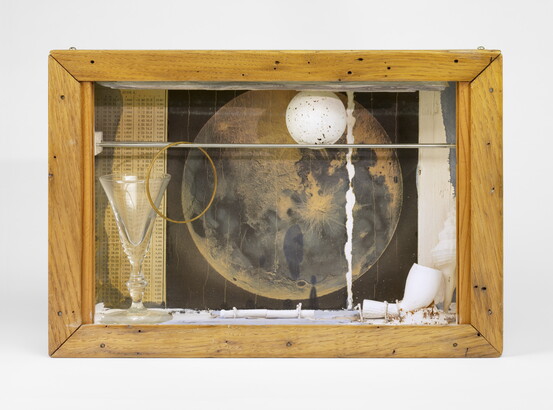

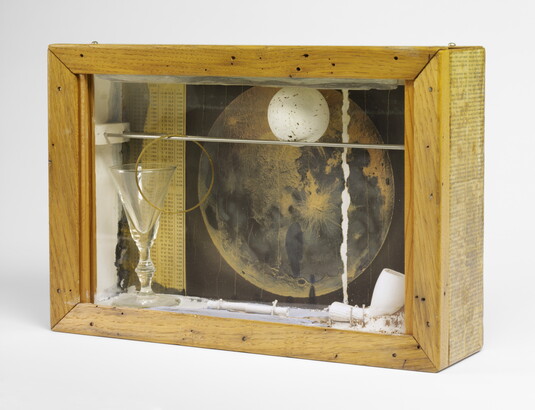
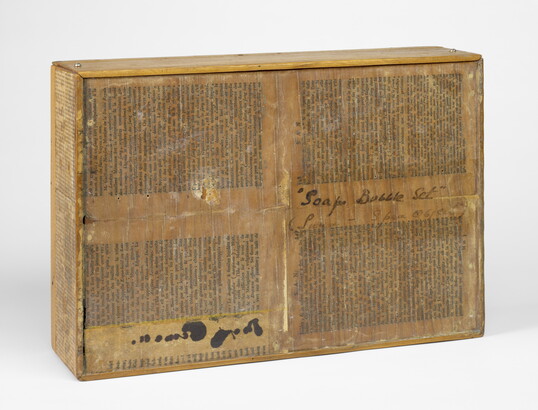
Artwork Images
Photo:
Controls
Soap Bubble Set (Lunar-Space Object)
Object Details
-
Date
ca. 1959
-
Object Type
Sculptures
-
Medium
Mixed media
-
Dimensions
9 7/8 x 14 1/2 x 3 3/4 in.
-
Inscriptions
Verso:
signed l.l. in ink: [backwards] Joseph Cornell
titled c.c. in ink: "Soap Bubble Set"\ (Lunar - Space Object)
-
Credit Line
Amon Carter Museum of American Art, Fort Worth, Texas
-
Accession Number
2009.3
-
Copyright
© The Joseph and Robert Cornell Memorial Foundation / Licensed by VAGA at Artists Rights Society (ARS), NY
Object Description
From a young age, Cornell was fascinated by astronomy. He created hundreds of artworks dealing with outer space, and he amassed a sizeable collection of books, magazines, star charts, newspaper clippings, and other items related to astronomy, ranging from the origins of the modern discipline in the Renaissance to the latest developments of the Space Race between the United States and the Soviet Union.
In the mid-1930s, Cornell embarked on his Soap Bubble Sets—small shadowboxes filled with objects that carried metaphorical associations with astronomy. Juxtaposed against a photograph of the moon, the seashell included in this set suggests tides and the moon’s gravitational pull, while the ring and ball suspended on rails recall the path of the moon’s orbit. The other objects hint at more cryptic meanings. Though related to certain scientific principles, the work is personal and mysterious, signaling Cornell’s romantic response to the study of the cosmos.
—Text taken from the Carter Handbook (2023)
-
American Still LifeFebruary 14–August 16, 2015
Organized in celebration of a recent acquisition, American Still Life highlights the ability of 19th and 20th-century American artists to celebrate the ordinary through their paintings, whether trompe l’oeil masters or modernist photographers.
-
From Remington to O’Keeffe: The Carter’s Greatest HitsOctober 6, 2018–March 22, 2019
During the renovation, this exhibition features highlights from the permanent collection, including paintings, photographs, and sculptures, by some of America’s most renowned artists.
Additional details
Location: Off view
See more by Joseph Cornell
Tags
-
What is an assemblage?
Why might an artist incorporate everyday objects into an artwork?
How might a work of art reflect or relate to important moments in history?
-
Look closely at the work of art. What materials did the artist use to create this sculpture?
What is an assemblage? A form of sculpture made of “found” objects arranged so that they create a new artwork. Found objects can be organic or human-made and can include anything from scraps of wood, like in George Morrison’s New England Landscape II, to juggling pins, like in Louise Nevelson’s Lunar Landscape.
Why do you think Cornell chose these objects to create this sculpture?
Are there any objects that stand out to you more than the rest?
One object is bigger than the rest. What is the object, and why do you think Cornell decided to make it the focal point? What other decisions did the artist make in arranging these items? Why do you think Cornell composed the objects in this way?
What do you think is the subject of this work of art? The title of the artwork provides some hints.
This artwork was made in 1959. What events were happening in the United States during that time?
What historical event was taking place between the former Soviet Union and the United States during this post-World War II time?
How might the objects in this assemblage be symbols for the Space Race/ or of space itself? What do you think the objects symbolize? Associating bubbles with planets, Cornell incorporated a bubble-blowing pipe at the bottom of the box. The seashell suggests the tides and the gravitational pull between the earth (white ball) and the moon, while the column of numbers is likely a chart of star notations.
-
Grades 5–12
Students will research a moment in history. Using their selection as their main topic, they will collect found objects that symbolize moments from their chosen history topic. Found objects should be small enough to fit inside of a shoebox or box lid.
Once students have a plentiful collection of found objects, they will use a shoebox or box lid as a shadowbox to house their sculpture.
Students should practice placing their objects until they are happy with the composition.
Upon finalizing their composition, students should glue or tape their found objects down.
On the back of their shoebox or box lid, students should write a key indicating which items symbolize what aspect of their historical moment.
Share Educator Resources
Amon Carter Disclaimer
This information is published from the Carter's collection database. Updates and additions based on research and imaging activities are ongoing. The images, titles, and inscriptions are products of their time and are presented here as documentation, not as a reflection of the Carter’s values. If you have corrections or additional information about this object please email us to help us improve our records.
Every effort has been made to accurately determine the rights status of works and their images. Please email us if you have further information on the rights status of a work contrary or in addition to the information in our records.
Related Works
-
Study for Amon Carter Museum Plaza, 1960
Alexander Calder
Painted sheet metal
1961.418
-
Diana, ca. 1894
Augustus Saint-Gaudens
Cement and plaster
1981.67
-
Study for Amon Carter Museum Plaza, 1960
Alexander Calder
Painted sheet metal and wire
1961.417
-
Horse, ca. 1960
Charles Umlauf
Glazed terra cotta
1975.77
-
Untitled (S.453, Hanging Three-Lobed, Three-Layered Continuous Form within a Form), ca. 1957-1959
Ruth Asawa
Iron wire
2019.39
-
Green Nude, ca. 1920
Gaston Lachaise
Crayon on paper
2018.4
-
Weeping Beech, Brooklyn Botanic Garden, Brooklyn, 2011
Mitch Epstein
Gelatin silver print
P2012.13
-
Untitled, 1970
Luchita Hurtado
Lithograph
1970.86
-
An American Girl, 1895
Bessie Potter Vonnoh
Tinted plaster
1993.1


